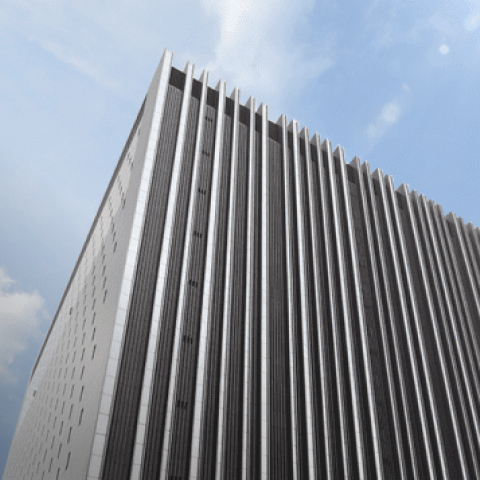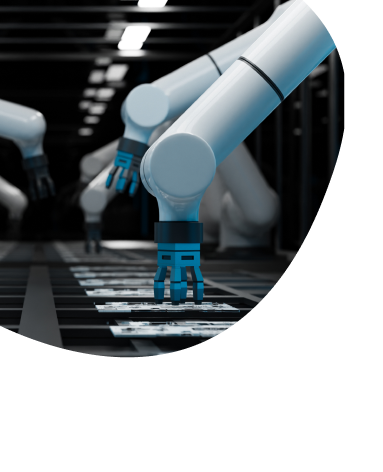Government R&D is being promoted to develop an ultra-high-efficiency DC cooling system by applying immersion cooling to data centers (DC). In particular, this R&D will include recycling of waste heat recovered after immersion cooling verification, so attention is focused on whether it will lead to the development of a business model in the future.
The Korea Institute of Energy Technology Evaluation Planning announced the ‘Development Verification of Ultra-High-Efficiency Data Center Thermal Management Technology Using Immersion Cooling’ project as a new research development project for the 2024 Energy Technology Development Project.
Recently, DCs have been trending toward larger sizes higher integration, in order to respond to this, new cooling technology development that overcomes the ations of existing air cooling structures is necessary. Due to the rapid development of AI, DC computational loads are increasing explosively, power consumption per rack is continuously increasing due to the expansion of HPC (High Performance Computing), approaching the s of existing DC rack-type thermal management.
The IEA announced in January that the global DC annual power consumption in 2020 was estimated to be 240-340TWh, accounting for 1-1.3% of global power consumption. According to Samil PwC Management Research Institute, the number of data centers worldwide in 2021 was 1,851, of which 659 were hyperscale DCs over 20,000㎡.
The DC industry is expected to continue to grow along with the development of the domestic ICT industry. According to Aritzon, a global market research firm, the global DC market is expected to grow from $215.8 billion in 2021 to $288.3 billion in 2027, the Korean DC market is expected to grow to $5.8 billion in 2027.
Accordingly, there is a great need for DC to continuously lower PUE to increase power usage efficiency secure technology to recycle heat energy generated during operation. Efforts are being made to utilize low-temperature outdoor air, water heat sources, LNG cold energy for DC cooling, but the domestic DC average PUE is at 1.78, which is a large gap from the world average of 1.59.
As the DC market continues to grow, the new technology of immersion cooling is expected to support this industrial expansion. As the DC market continues to grow, the DC liquid cooling market is also expected to grow by an average of 24.84% per year. The liquid cooling market, which was worth 2.45 billion dollars in 2021, is expected to grow to 7.4 billion dollars in 2027. In particular, immersion cooling is expected to grow even more rapidly at an average of 25.8% per year, reaching an estimated size of 1.26 billion dollars in 2027.
In order for domestic industries to enter this promising market, R&D of new products technologies is urgent. However, in the case of immersion cooling, which has emerged as the next-generation DC heat management, private-sector-led development has significant ations. Government R&D support is urgently needed to respond to the rapid progress of digital transformation the surge in DC power consumption.
Goal of achieving PUE 1.0
The ultimate goal of this technology development is the development of core immersion cooling technologies for high-density DC heat management, the development of integrated server/rack module technologies, the development demonstration of a DC immersion cooling system that combines unused heat active utilization technologies. In other words, the goal is to develop high-efficiency technologies that can drastically reduce DC PUE from 1.55 to 1.0, along with technologies that can actively utilize recovered unused heat. Unused heat active utilization technologies refer to modules heat management methods that can recover use immersion cooling heat source energy, such as adsorption heat pump technologies.
The target technology is to develop core immersion cooling technologies for high-density DC heat management, including immersion cooling systems immersion server technologies. In addition, the active utilization thermal management technology of immersion cooling unused heat the integrated demonstration of unused energy utilization technology linked to the DC immersion cooling system will be promoted together.
The technology development direction was set to internalize optimize non-conductive eco-friendly working fluids for immersion cooling, to develop single-phase multi-phase immersion cooling thermal performance optimization heat transfer promotion technology utilizing them. In addition, the development of integrated system thermal management technology through system linkage with the thermal management unit along with the application development of reactors heat exchangers for active utilization of unused energy derived from immersion cooling will be promoted. In addition, rack structure optimization technology considering heat source arrangement the development of optimal operation performance evaluation technology for heat exchange performance will be promoted, the plan is to realize the scale-up application of immersion cooling server rack modules to respond to the demonstration scale the demonstration integrated installation test operation technology of immersion cooling unused energy active utilization modules. The verification system is developed in parallel with the non-stop high-reliability operation management technology for performance optimization, the comprehensive PUE through this must achieve 1.0.
There are three sub-tasks in total, the third sub-division in charge of verification is a system that plays the role of a general task. The first sub-division is ‘DC immersion cooling core element technology development’, it consists of △ single-phase multi-phase immersion cooling thermal performance optimization heat transfer promotion technology development △ internalization optimization technology of non-conductive eco-friendly working fluid for immersion cooling in compliance with regulations △ development of flow path analysis, design, rack structure optimization technology according to server high-heat heat source placement △ development of server-rack working fluid heat exchange performance optimal operation performance evaluation technology, etc.
The second sub-part is ‘Development of technology for active utilization thermal management of unused heat from immersion cooling’, including: △ Analysis of heat cycle utilizing low-temperature heat sources derivation of optimal cycles △ Development of thermal management technology for immersion cooling systems (dry coolers liquid coolers, etc.) △ Development of design technology for reactors heat exchangers for active utilization of unused heat from immersion cooling (components system technology for utilizing chip cooling arrays below 65℃) △ Development of technology for linking immersion cooling thermal management units unused heat active utilization systems △ Development of integrated thermal management technology for immersion cooling data centers, etc.
The third sub-part is ‘Integrated demonstration of technology for utilizing unused energy linked to immersion cooling systems for data centers’. The development contents include: △Development of technology for scale-up application of immersion cooling server-rack modules corresponding to a demonstration scale △Development of technology for linking with a base system for active utilization of unused heat △Integrated thermal design system optimization technology for immersion cooling/thermal management modules △Technology for demonstration integrated installation test operation of immersion cooling active utilization of unused energy modules △Development of technology for uninterrupted high-reliability operation management for optimization of demonstration system performance △Installation of integrated immersion cooling systems for high-density data centers demonstration of energy efficiency indicators (PUE 1.0X, application of server racks with a demonstration scale of 200kW or more, demonstration period including summer winter for more than 2,000 hours).
The R&D will be conducted for 48 months, the government-supported R&D expenses will be approximately KRW 18 billion, with approximately KRW 4 billion to be supported in the first year.







































